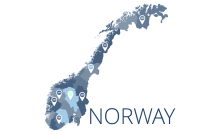Singaporean Dialects
Singapore is a culturally diverse country, and this is reflected in the various dialects spoken by its citizens. There are four main dialects in Singapore: Mandarin, Malay, Tamil, and English. While Mandarin is the most widely spoken language, all four dialects are used in different settings and for other purposes.
Mandarin is the most widely spoken language in Singapore, with over 60% of the population using it as their first language. It is the language of instruction in schools and is used in most formal settings. However, it is not the only dialect spoken in Singapore.
Malay is the second most widely spoken language in Singapore, with about 20% of the population using it as their first language. It is the official language of Singapore and is used in many government and legal settings. Tamil is the third most widely spoken language in Singapore, with about 10% of the population using it as their first language. It is mainly spoken by the Tamil community in Singapore and is used in many religious and cultural settings.
Bengali, Hakka, Min Bei, Min Dong, Min Nan, Pu-Xian, Yue, Gujarati, Hindi, Javanese, Madura, Malayalam, Orang Seletar, Punjabi, Sindhi, Singaporean Sign Language, Sinhala, and Telugu are among Singapore’s additional unofficial language and dialects, according to Ethnologue.






